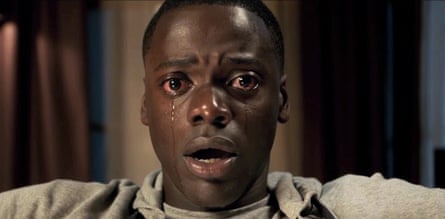The revival of horror fiction discussed by Jordan Peele, Mariana Enríquez, and other authors.
T
There was a period, several decades ago, when horror literature was represented by only a handful of authors. In the US, it was Stephen King and Dean Koontz, and in the UK, James Herbert and Clive Barker. While sales were booming, there was little critical acclaim as these books were often passed around among students. However, in the mid 90s, the genre seemed to vanish. Authors of frightening tales were rebranded into more commercially appealing categories such as thriller, dark fantasy, or the broad label of suspense.
Currently, the horror genre has made a strong comeback and is no longer considered taboo. Companies like Titan and Nightfire focus primarily on publishing horror works, while independent publishers are aiding in the discovery of new authors. Additionally, there is a thriving online community of readers, writers, critics, and commentators who promote literature’s darkest themes.
Such insatiable appetite is forcing change. From the Argentinian new wave to British neo-folk, from the Asian-inflected horror of authors such as Chinese-Canadian writer Ai Jiang to the African heritage of British-Nigerian Nuzo Onoh, writers across the world are pushing outwards, creating space for new perspectives. Horror is rapidly evolving from what was once a white, male and highly Anglocentric genre into something more diverse and much more reactive.
A recently published book in the United States serves as evidence of this advancement. Entitled “Out There Screaming: An Anthology of New Black Horror”, it is curated by filmmaker Jordan Peele, known for his works “Us” and the compelling Oscar-winning film “Get Out”. In the book’s introduction, Peele expresses his belief that horror can provide catharsis through entertainment, allowing individuals to confront their deepest pain and fears. However, he also notes that this is not achievable for Black individuals without their stories being shared and told in the first place.
Peele and co-editor John Joseph Adams compiled this collection as an opportunity to feature the most talented Black authors in fiction. Peele explains in an email that he wanted the authors to create personalized nightmares that would reveal previously unspoken truths. The resulting stories feel like they would not have been told just a few years ago.
NK Jemisin’s piece delves into the topic of police brutality through a surrealistic portrayal of body horror. Meanwhile, Tananarive Due presents a reimagined take on a moment from the civil rights movement, evoking a sense of unearthed folklore. It is noteworthy that many of the stories in Out There Screaming do not heavily rely on racialized horror, instead choosing to center on the complex issue of trauma which has been a contentious topic within the Black horror community.

Peele informed me that prior to the release of Get Out, there were concerns that the film would be criticized for solely focusing on trauma. The fear was that it could potentially be too triggering for viewers. However, the overwhelming response of catharsis was incredibly fulfilling. Furthermore, Peele expressed his admiration for the fact that the stories in Out There Screaming cover a diverse range of worlds.
The creators cover a wide range of Black speculative stories, including African-Caribbean fantasy and SF horror like Lesley Nneka Arimah’s Invasion of the Baby Snatchers. In this story, aliens do not come from the sky, but rather enter through the bodies of pregnant women. While it may seem like a commentary on racist anxieties about interracial relationships or a satirical take on “replacement theory”, limiting the interpretation to just one metaphor would overlook the vast creativity in Arimah’s work.
Arimah explains that when those who are not Black engage with Black narratives, there is often an emphasis on the Black experience as a means of enlightenment. It can feel as though they are reminding you to “eat your vegetables.”
Author Nnedi Okorafor shares the sentiment, questioning the meaning of the “Black experience.” She explains that stories may focus on racism, but they can also depict a Black character simply living their life. In Okorafor’s work, Dark Home, a Nigerian-American woman is haunted by a spirit from an Igbo masquerade. When she returns to the United States, the clash between the ancient entity and her modern smart home reflects her inner struggles with her identity. This tension is a common theme in Black horror literature, as the weight of past events clashes with the desire for new narratives.
Out There Screaming is a notable display of horror from Black American authors, but the modern horror canon encompasses a much broader range. Victor LaValle, Zakiya Dalila Harris, Alexis Henderson, Johnny Compton, and SA Cosby each bring their own unique perspectives to the genre. LaValle’s The Changeling weaves a terrifying urban fairy tale, while Harris’s The Other Black Girl serves as a scathing critique of workplace microaggressions, taking a Black Mirror-esque turn into the realm of the fantastical. In Cosby’s All the Sinners Bleed, the lines between horror and crime are blurred as a Black sheriff investigates a string of murders in a small town plagued by prejudice and poverty. Cosby delves into the idea that cruelty is not only rooted in racial discrimination, but also in economic inequality. As the sheriff explains, “Violence breeds more violence, and all acts of violence are a manifestation of pain. Those who are hurt often hurt others.”
The driving force behind the widespread emergence of horror is a universally recognized truth. Many works of fiction from countries other than Britain and the US are written in direct response to years of imperialism, cultural dominance, or political turmoil. Examples of this include Cassandra Khaw’s Nothing But Blackened Teeth, which features a group of unpleasant western tourists facing a supernatural threat from an East Asian perspective, and Attila Veres’ collection The Black Maybe, which boldly deviates from traditional horror conventions.
In the United Kingdom, there is a heightened sense of urgency in the horror genre as it confronts political issues. In his works The Loney and Starve Acre, Andrew Michael Hurley skillfully captures the conflict between rebellion and tradition within a gothic setting. Meanwhile, Alison Rumfitt’s remarkable novel Tell Me I’m Worthless portrays Britain as a haunted house, plagued by the lingering ghosts of fascism and discrimination.
Ignore the advertisement for the newsletter.
after newsletter promotion
In Latin America, the concept of “violence begetting violence” is exemplified in the explosive nature of horror. Within this context, Argentina stands out as a hub for a macabre revolution, led by three female writers: Agustina Bazterrica, Samanta Schweblin, and Mariana Enríquez. It should be noted that this discussion is limited to authors who have been translated into English. However, Bazterrica and Enríquez have shared a list of writers from various countries within the continent who are highly respected locally but have yet to gain recognition from English-speaking horror enthusiasts.
Bazterrica sees the growth of Argentinian horror as a reflection of a country plagued by violence. The haunting memory of state terrorism that resulted in the torture, death, and disappearance of countless individuals remains a constant presence. This theme is evident in Tender Is the Flesh, where the inability to consume animal meat leads to the legalization of cannibalism by the government. The novel is a disturbing combination of futuristic dystopia, societal critique, and pure horror, which Bazterrica describes as breaking free from societal constraints.
The focus of Schweblin’s book Little Eyes is on how we interact with technology and capitalism, which is embodied in the popular “kentuki” device. These digital pets, resembling a mix of Furby and Tamagotchi, are covered in felt and have made their way into homes worldwide. With its camera, the kentuki acts as a one-way mirror, but those who welcome these adorable companions into their personal spaces never know who may be watching from the other side. Little Eyes tells a universal tale about the consequences of turning ourselves into objects of entertainment and consumption. However, one can also see parallels to her country’s recent history of authoritarian rule and government surveillance in this portrayal of technological paranoia.
Mariana Enríquez is a highly recognized author in the realm of Latin American horror. Her collections of stories, Things We Lost in the Fire and The Dangers of Smoking in Bed, have gained widespread acclaim through English translations. Recently, her epic horror series Our Share of Night was published, delving into the brutality of an occult group over several decades. Enríquez boldly connects the terrible influence of this cult to Argentina’s oppressive military regime, with the government openly supplying them with new excuses, victims, and suffering.
The book “Our Share of Night” combines elements of both Argentinian horror and traditional Anglo horror. It can be compared to a Stephen King-style story set in Buenos Aires. There is also a section that takes place in 1960s London with elements of English folk psychedelia, and another section that deals with the tragic real-life death of Omayra Sánchez in Colombia. This book is a unique blend of familiar and unfamiliar elements that can be seen in many modern horror stories.
Enríquez explains that they draw inspiration from authors such as King, Lovecraft, Poe, and Jackson, but they focus on incorporating elements from their own reality into their work.
Source: theguardian.com


